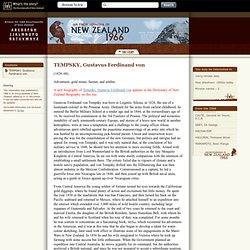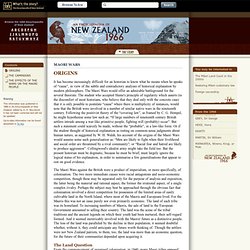

The Meeting Place - A New Zealand History Blog: The Invasion of Parihaka, 5 November 1881: An Eyewitness Account. On 5 November 1881 Native Minister John Bryce led 1600 Armed Constabulary into the South Taranaki settlement of Parihaka, arresting leaders Te Whiti o Rongomai and Tohu Kakahi.

Over the following weeks the remaining residents were forcibly dispersed and the settlement destroyed. The ‘crime’ of the people of Parihaka had been to peacefully resist the confiscation of their lands. Over the years, these events have been described — and the enormous injustice that occurred — exposed in a number of secondary works. These include George Rusden’s 1883 History of New Zealand, Dick Scott’s influential account Ask That Mountain (1975), Hazel Riseborough’s Days of Darkness (1989), and Rachel Buchanan’s The Parihaka Album (2010).
His relations with ministers deteriorated rapidly thereafter, and it would seem that he determined to report the events as fully as possible by way of payback. (Thus far our own correspondent. A few moments after Colonel Roberts said: — “Call Te Whiti.” Parihaka: About Parihaka. TEMPSKY, Gustavus Ferdinand von. Adventurer, gold miner, farmer, and soldier.

A new biography of Tempsky, Gustavus Ferdinand von appears in the Dictionary of New Zealand Biography on this site. Gustavus Ferdinand von Tempsky was born in Leignitz, Silesia, in 1828, the son of a lieutenant-colonel in the Prussian Army. Destined for the army from earliest childhood, he entered the Berlin Military School at a tender age and in 1844, at the extraordinary age of 16, he received his commission in the 3rd Fusiliers of Prussia. The political and economic instability of early nineteenth-century Europe, and stories of a brave new world in another hemisphere, were at once a temptation and a challenge to the young officer whose adventurous spirit rebelled against the peacetime manoeuvrings of an army into which he was hustled by an uncompromising jack-booted parent. Von Tempsky's appetite for action was insatiable, and he managed to communicate a similar urgency to his men.
Von Tempsky died at the zenith of his career. Pressure on Maori land - War in Taranaki 1860-63. ORIGINS. It has become increasingly difficult for an historian to know what he means when he speaks of “cause”, in view of the subtle and contradictory analyses of historical explanation by modern philosophers.

The Maori Wars would offer an admirable battleground for the several theorists. The student who accepted Hume's principle of regularity which asserts (to the discomfort of most historians, who believe that they deal only with the concrete case) that it is only possible to postulate “cause” where there is multiplicity of instances, would note that the British were involved in a number of similar native wars in the nineteenth century.
Following the positivist theory of the “covering law”, as framed by C. G. Hempel, he might hypothesise some law such as: “If large numbers of nineteenth century British settlers intrude among a war-like primitive people, fighting will (probably) occur”. The Maori Wars against the British were a product of imperialism, or more specifically, of colonisation. Hōne Heke chopping down a British flag pole, 1845 – Treaty of Waitangi. This 1908 illustration depicts the scene at Kororāreka (later Russell) in the Bay of Islands in 1845.

Hōne Heke was the first of 45 powerful northern chiefs to sign the Treaty at Waitangi. He later grew disappointed at the loss of trade with European ships, and at challenges to his authority. From late 1844 he and his men repeatedly cut down the flag pole above the bay at Kororāreka. In March 1845 he cut it down again, and fighting broke out at Kororāreka, then spread throughout central Northland. About this item.